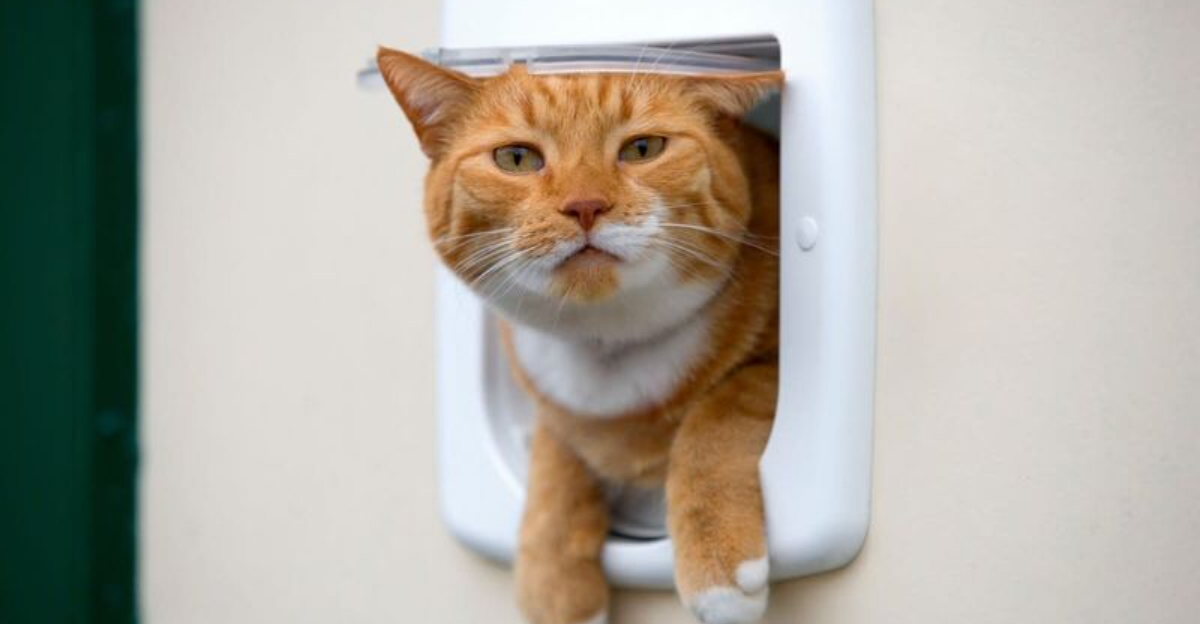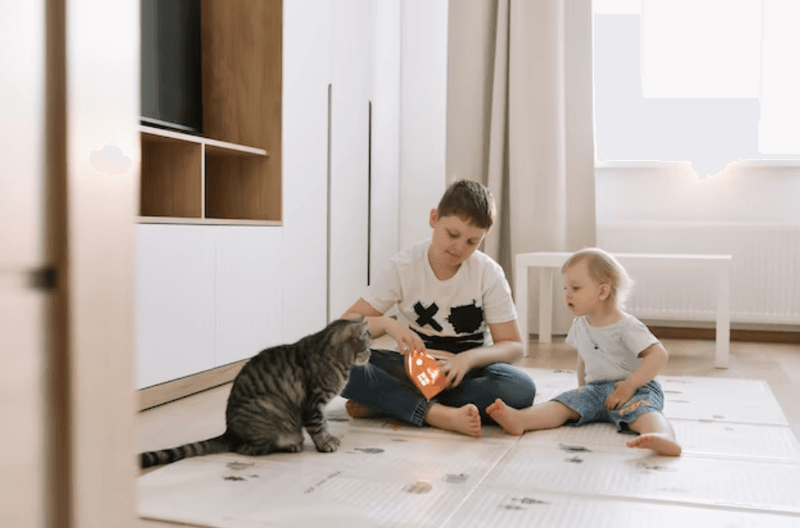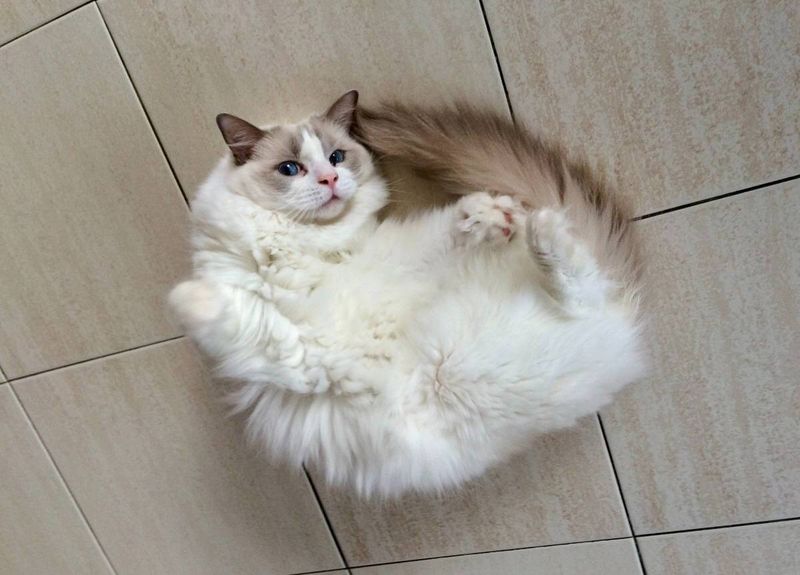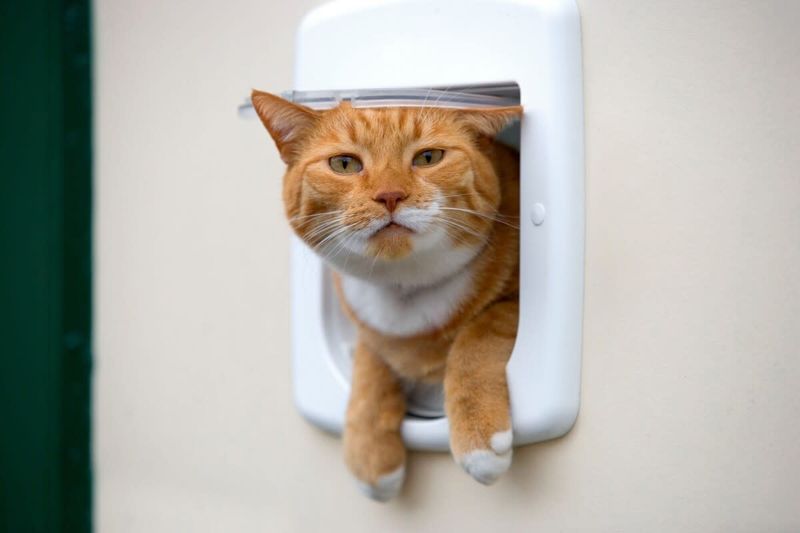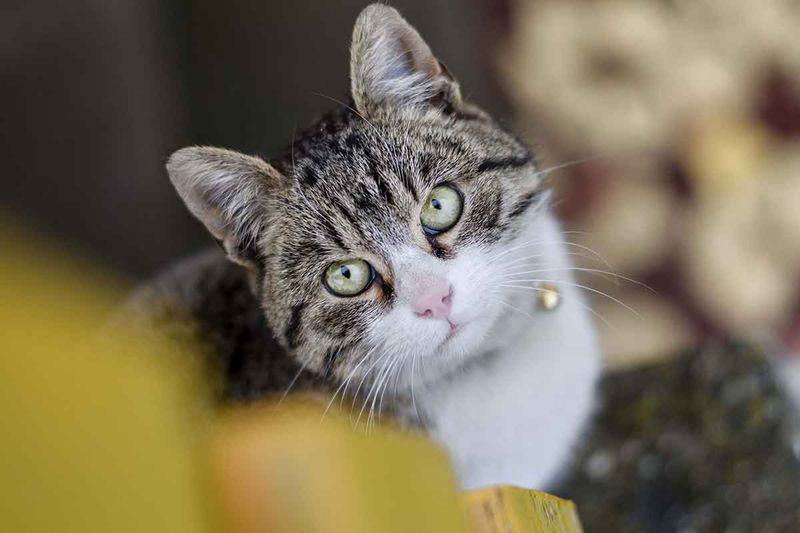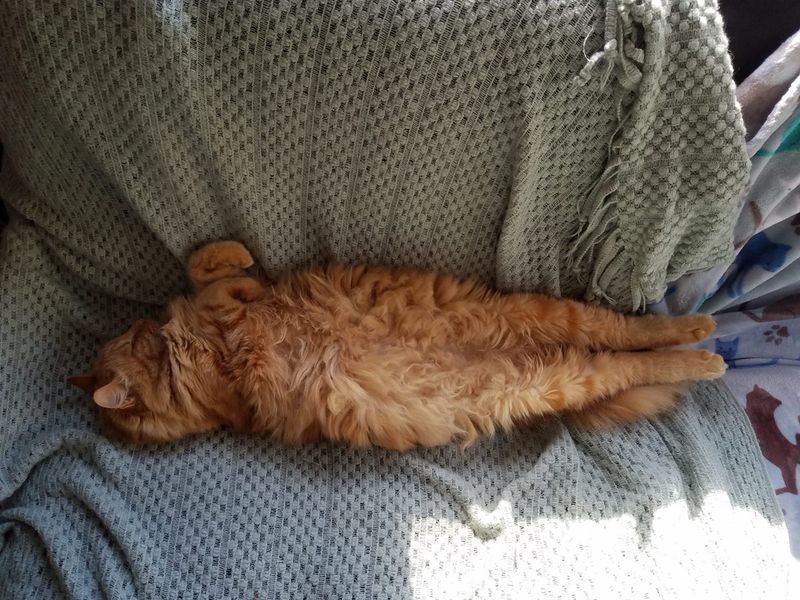📖 Table of Content:
- 1. Training Their Humans
- 2. Navigating Home Over Long Distances
- 3. Mastering Communication
- 4. Solving Complex Problems
- 5. Exhibiting Stealth and Precision
- 6. Retaining Detailed Memories
- 7. Understanding Cause and Effect
- 8. Sensing Human Emotions
- 9. Adapting to New Situations
- 10. Using Purring Strategically
- 11. Feigning Affection for Rewards
- 12. Selecting Optimal Resting Spots
Cats have captivated humans for centuries with their grace, independence, and mysterious behavior. While often seen as aloof or unpredictable, these feline companions possess a surprising level of intelligence that frequently goes unnoticed. Unlike dogs, who openly seek approval, cats exhibit their smarts in more subtle and strategic ways—often manipulating their surroundings (and humans) to suit their desires.
From knowing exactly when and how to meow to get a snack, to disappearing into impossible hiding spots when it’s time for a vet visit, cats consistently demonstrate cunning and cleverness. Their behaviors aren’t just instinctual—they’re learned, refined, and adapted over time. Whether they’re figuring out how to open doors, or silently judging from their perch, cats are quietly playing a game of chess while we’re still playing checkers.
In this list, we’ll explore twelve remarkable ways that cats outsmart the people around them. These insights not only reveal how sharp and perceptive cats can be, but also deepen our appreciation for the unique bond between humans and their feline companions. Prepare to be impressed—and maybe a little humbled—by the genius of your whiskered friend.
1. Training Their Humans
From a young age, cats learn how to shape human behavior to their advantage. Rather than relying on trial and error alone, they observe patterns—when a certain sound or action gets them food, they repeat it. Unlike dogs who seek commands, cats give them, and many owners unwittingly obey. By sharpening their meows into a perfectly timed chorus at dawn, they often coerce their humans out of bed. Subtle tactics like headbutts or slow blinks can summon affection just when they want it. Even ignoring you can be strategic, prompting people to try harder for their cat’s attention. This isn’t random behavior—it’s calculated manipulation. In many households, it’s clear who’s really in charge: the cat.
2. Navigating Home Over Long Distances
Somehow, cats possess an uncanny ability to return home, even when transported miles away. Scientists have long debated the cause—magnetic fields, scent trails, or even celestial cues. Regardless of the mechanism, the result is astonishing. Tales abound of felines journeying through forests, cities, and highways to reach their families again. Even with no GPS, they outmatch many humans’ sense of direction. Such feats suggest a deep-rooted spatial awareness paired with perseverance. Most impressive is their capacity to remember home as a fixed point in a changing world. It’s no wonder they’re seen as mystical wanderers with internal maps.
3. Mastering Communication
Communication with humans is something cats have practically turned into an art form. Rather than relying solely on vocalizations, they layer in subtle tail flicks, blinks, and posture changes to express intent. While a wagging dog is universally understood, cats require humans to “learn the dialect.” With time, many do—rewarded by meaningful interactions and an eerie sense of mutual understanding. Interestingly, cats rarely meow at each other in adulthood; they reserve that for us. Their ability to mimic baby cries is thought to trigger human caretaking instincts. These complex interactions go beyond instinct—they’re proof of high-level social intelligence. Through patience and persistence, cats build their own language with their favorite humans.
4. Solving Complex Problems
Give a cat a puzzle, and you’ll likely watch an elegant solution unfold. Whether it’s opening a door, stealing treats from containers, or escaping a pet carrier, cats excel at finding ways around obstacles. They don’t give up easily, often experimenting with different approaches until one works. Unlike animals who rely on brute force, cats favor finesse and creativity. That’s why a “cat-proof” barrier often fails within days. Their curiosity drives their intellect, turning every household object into a challenge to conquer. Some even observe humans to reverse-engineer how latches, drawers, or windows work. Behind those wide eyes lies a problem-solving powerhouse.
5. Exhibiting Stealth and Precision
Silence is a cat’s superpower, allowing them to move undetected across any terrain. Each pawstep is measured, calculated, and almost undetectable until they’re right behind you. Precision isn’t just for the hunt—it’s how they avoid knocking things over or slipping on narrow ledges. Even when playing, their strikes are lightning-fast and surprisingly accurate. Unlike clumsy creatures, cats are wired for agility and control. Their muscular structure and low center of gravity contribute to expert balance. Many owners find their cats suddenly appearing where they weren’t just seconds ago, as if teleporting. This stealth is a perfect blend of physical intelligence and evolved grace.
6. Retaining Detailed Memories
Memories in cats are sharper than we often assume. Once they’ve experienced something—good or bad—they rarely forget it. A single loud noise during mealtime can trigger avoidance of that spot for months. Conversely, they remember exactly where you hide their favorite treats or toys. Even people they haven’t seen in years may receive a warm (or cold) reception based on past interactions. This long-term recall plays a huge role in how they navigate their environment. Every corner of the home is mentally mapped, cataloged, and revisited with purpose. Clearly, their minds are as meticulous as their grooming habits.
7. Understanding Cause and Effect
Knocking over a glass of water might seem mischievous, but it’s often a lesson in physics. Cats learn quickly that certain actions produce specific outcomes. Push something—it falls. Scratch the couch—you react. Rather than acting randomly, they’re often testing hypotheses in their own curious way. This learning by experimentation shows a clear understanding of cause and effect. It’s the same principle they apply when ringing bells, opening drawers, or walking across keyboards. Unlike many pets, they observe, predict, and then act with intent. These behaviors are less about chaos, and more about calculated discovery.
8. Sensing Human Emotions
Not all intelligence is measured by tricks or tasks—some of it is deeply emotional. Cats have a profound ability to tune in to the emotional states of their humans. They often approach when we’re sad, anxious, or unwell, offering silent comfort. Their presence alone has been known to reduce stress and blood pressure. Whether it’s sitting nearby or pressing their body against you, these moments feel more than coincidental. Despite their independent image, cats forge powerful emotional bonds. They don’t just coexist—they observe and respond with empathy. Emotional intelligence, though subtle, runs deep in the feline mind.
9. Adapting to New Situations
At first glance, cats may appear creatures of strict routine. But given time, they adjust to change with surprising resilience. Whether it’s moving to a new home, meeting a new pet, or dealing with altered schedules, they eventually find a new rhythm. Their initial resistance is a protective instinct, not a limitation. Observing quietly, they study their surroundings before engaging. It’s this caution that allows them to adapt with minimal risk. Over time, they establish a sense of security in even the most unfamiliar places. Adaptability, in this
10. Using Purring Strategically
What sounds like pure bliss may actually be strategic manipulation. Cats purr not only when content, but also when hungry, anxious, or seeking attention. Certain frequencies of their purrs are known to be soothing to humans, which may explain why we react positively. By leveraging this, cats often get what they want without a single meow. The healing aspect of purring—for both cats and humans—adds another layer of mystery. Scientists have even noted that purring frequencies can promote bone healing and pain relief. It’s a multi-purpose tool cleverly wielded for both comfort and influence. In essence, it’s the feline equivalent of sweet-talking.
11. Feigning Affection for Rewards
Cats know how to turn on the charm when it benefits them. Moments of unexpected affection often align suspiciously with treat time or access to cozy spots. While the affection may still be genuine, the timing reveals a deeper strategy. Purring, rubbing, and lap-sitting can all be deployed as tools of negotiation. Rather than begging, cats gently influence us through warmth and perceived connection. Once the reward is received, they might vanish just as quickly as they appeared. This ebb and flow of attention is often misunderstood as aloofness—but it’s deliberate. Manipulating affection to receive benefits is a sign of clever social adaptation.
12. Selecting Optimal Resting Spots
Finding the coziest, warmest, or most elevated perch is a daily mission for cats. Without fail, they locate sunbeams, plush blankets, or high vantage points for their naps. These choices are rarely accidental—they maximize safety, comfort, and warmth. From a survival perspective, such spots offer protection and visibility. It’s not just about rest—it’s about control and observation. Even rotating their favorite spots shows an awareness of shifting temperatures or household activity. While it may seem like laziness, it’s actually strategic rest. Cats make lounging look easy, but it’s driven by clever environmental scanning.
